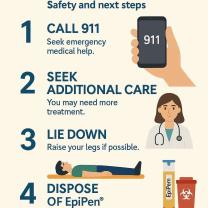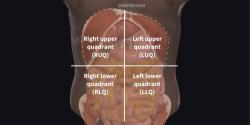What causes celiac stenosis?
Celiac stenosis, also known as celiac artery stenosis or celiac artery compression syndrome, is a medical condition that involves the narrowing or compression of the celiac artery. The celiac artery is a major blood vessel that supplies oxygen-rich blood to the stomach, liver, spleen, and other abdominal organs. The narrowing of this artery can lead to reduced blood flow to these organs, causing various symptoms and health issues.
Possible Causes of Celiac Stenosis
The exact cause of celiac stenosis may vary among individuals, but some common factors and conditions that can contribute to its development include:
- Median Arcuate Ligament Syndrome (MALS): MALS is a common cause of celiac stenosis. It occurs when the median arcuate ligament, a fibrous band of tissue, becomes abnormally tight and compresses the celiac artery, leading to narrowing and reduced blood flow.
- Atherosclerosis: Atherosclerosis is the buildup of fatty deposits (plaque) on the artery walls. Over time, the celiac artery may become narrowed due to plaque formation, impeding blood flow to the abdominal organs.
- Fibromuscular Dysplasia (FMD): FMD is a rare condition in which the walls of arteries develop abnormal fibrous tissues. In some cases, FMD can affect the celiac artery and cause stenosis.
- External Compression: Celiac stenosis can also be caused by external compression on the celiac artery due to adjacent structures like tumors, enlarged lymph nodes, or abnormal anatomy.
- Chronic Inflammation: Inflammatory conditions, such as vasculitis or chronic pancreatitis, may lead to changes in the artery wall and contribute to celiac artery stenosis.
- Congenital Abnormalities: Some individuals may be born with anatomical abnormalities that predispose them to celiac stenosis.
Symptoms and Diagnosis
The symptoms of celiac stenosis can vary depending on the degree of artery narrowing and the affected organs. Common symptoms may include abdominal pain after eating, weight loss, nausea, vomiting, and diarrhea.
Diagnosis of celiac stenosis typically involves medical history review, physical examination, and imaging tests such as ultrasound, computed tomography angiography (CTA), magnetic resonance angiography (MRA), or conventional angiography. These tests help visualize the celiac artery and identify any narrowing or compression.
Treatment Options
The treatment for celiac stenosis depends on the severity of the condition and the underlying cause. Mild cases may be managed with lifestyle changes, dietary modifications, and medications to manage symptoms and improve blood flow. In more severe cases, interventions such as angioplasty (dilating the artery with a balloon) or stent placement (to keep the artery open) may be necessary. In rare and extreme cases, surgical procedures might be considered to address the compression or blockage of the celiac artery.
If you suspect you may have celiac stenosis or are experiencing concerning symptoms, it is essential to seek medical attention for proper evaluation and diagnosis.













